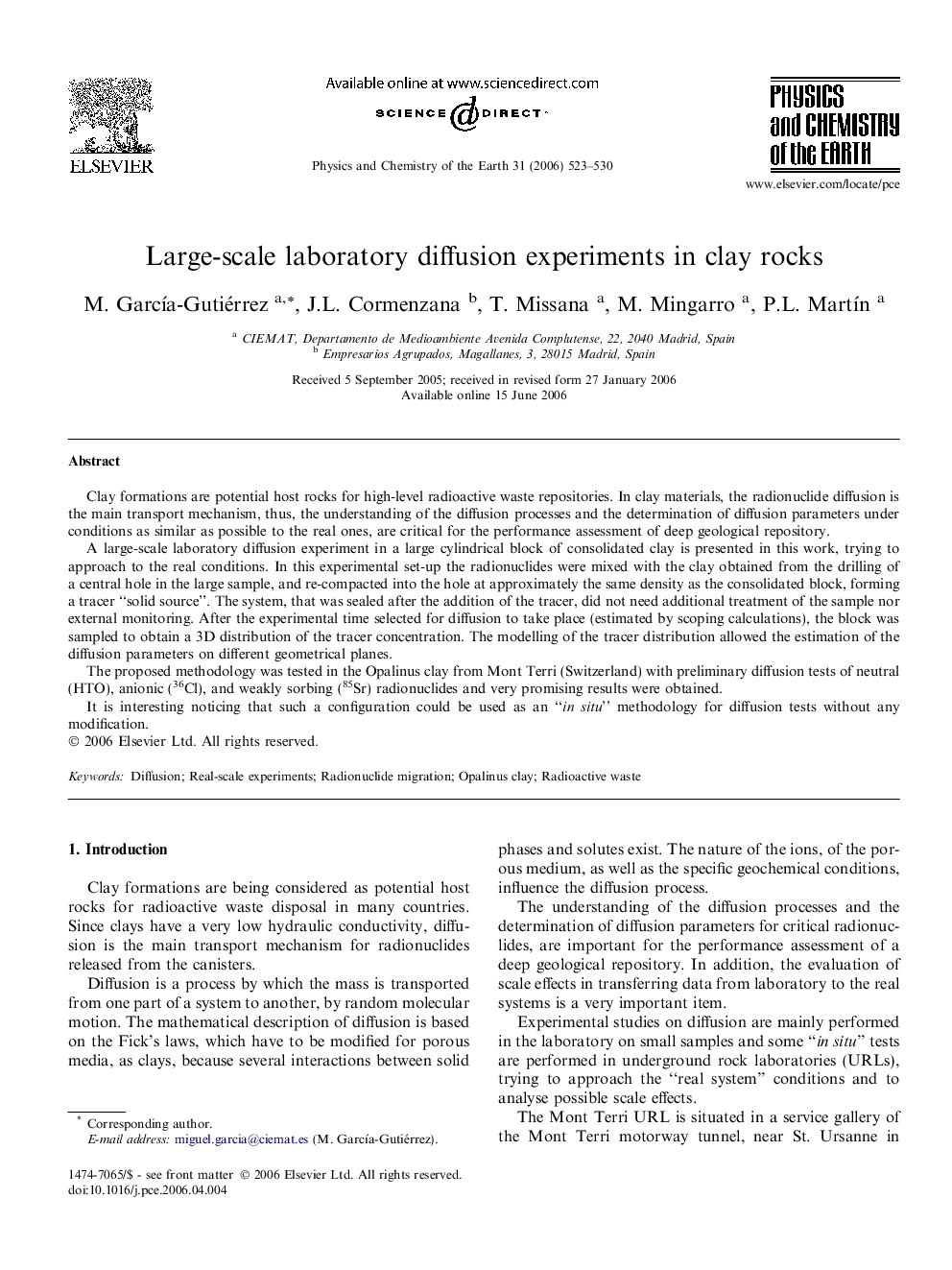| Article ID | Journal | Published Year | Pages | File Type |
|---|---|---|---|---|
| 4722083 | Physics and Chemistry of the Earth, Parts A/B/C | 2006 | 8 Pages |
Clay formations are potential host rocks for high-level radioactive waste repositories. In clay materials, the radionuclide diffusion is the main transport mechanism, thus, the understanding of the diffusion processes and the determination of diffusion parameters under conditions as similar as possible to the real ones, are critical for the performance assessment of deep geological repository.A large-scale laboratory diffusion experiment in a large cylindrical block of consolidated clay is presented in this work, trying to approach to the real conditions. In this experimental set-up the radionuclides were mixed with the clay obtained from the drilling of a central hole in the large sample, and re-compacted into the hole at approximately the same density as the consolidated block, forming a tracer “solid source”. The system, that was sealed after the addition of the tracer, did not need additional treatment of the sample nor external monitoring. After the experimental time selected for diffusion to take place (estimated by scoping calculations), the block was sampled to obtain a 3D distribution of the tracer concentration. The modelling of the tracer distribution allowed the estimation of the diffusion parameters on different geometrical planes.The proposed methodology was tested in the Opalinus clay from Mont Terri (Switzerland) with preliminary diffusion tests of neutral (HTO), anionic (36Cl), and weakly sorbing (85Sr) radionuclides and very promising results were obtained.It is interesting noticing that such a configuration could be used as an “in situ” methodology for diffusion tests without any modification.
